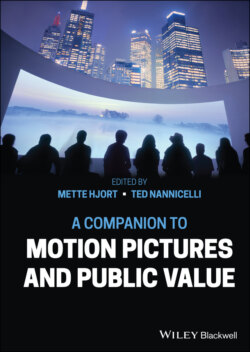Читать книгу A Companion to Motion Pictures and Public Value - Группа авторов - Страница 43
3 Appreciating Nature through Film A Defense of Mediated Appreciation
ОглавлениеGlenn Parsons
Although the nature film is a major film genre, philosophers writing about the aesthetics of nature have paid scant attention to it.1 One searches largely in vain for mentions of film in the literature; in contrast, representations of nature in other art forms, such as landscape painting and photography, have received extensive discussion.
One explanation for this oddity might be that nature film is of scientific, rather than aesthetic, interest. But this is manifestly false: as any viewer of these films knows, they are highly aestheticized, and frequently boast of revealing to viewers, in rich, high-definition experience, the beauty of the natural world. While it is true that much nature film also aspires to scientific interest, this can hardly explain the neglect of the genre, since many writers on the aesthetics of nature view science as directly relevant to the aesthetic appreciation of nature.2
A different explanation would point to the problematic history of nature film itself. Even within film studies, the genre receives relatively little attention, and has several problematic features. One is its reputation for deception. The most egregious examples involve outright misrepresentation of scientific fact, as in the infamous scene in Disney’s White Wilderness (1958) that purports to show lemmings marching off a cliff, when in fact the filmmakers were heaving them over it. More commonplace is the use of staging and editing techniques to present what appears to be natural, but is actually not, as when the BBC cut zoo footage of polar bear cubs into a story about Arctic polar bears in Frozen Planet (2011).3
Another worry about nature film is its ideological character. This worry is obviously related to the first one: by misrepresenting nature, or being highly selective in presenting it, Disney’s early nature films were, arguably, more concerned with reinforcing American social norms than depicting nature (Mitman 1999; Bousé 2000; MacDonald 2017). And finally, there have long been ethical worries about nature film, relating to its misrepresentation of fact, the abuse of animals, and negative effects on environmental attitudes (Bousé 2000; Benedictus 2016). Regarding the latter, nature film has even been derided as “ecoporn,” a genre that “satiates by providing objects for fantasy without making uncomfortable demands on the subject” (Millet 2004; Welling 2009).
While these are all real issues with nature film, I doubt that they fully explain its almost complete neglect in the aesthetics of nature, for these are mainly contingent problems with particular instances, and hardly impugn the genre per se. The 2019 Netflix series Our Planet, for example, was praised for incorporating a much more pervasive and accurate narrative of human environmental impact than any previous nature film. It also dedicated an entire episode to documenting the various stages of the filming and production process.
I believe there is a deeper explanation, which is that, in nature aesthetics, there has been a long-standing undercurrent of suspicion, not to say hostility, toward mediated appreciation in general. By “mediated appreciation” of nature, I mean appreciation that occurs not through direct or “in person” perception of nature, but through experience of a representation of nature. In this paper, I examine this opposition and argue that, while mediated appreciation of nature does involve certain dangers, these have largely been exaggerated, and have led to an unfortunate neglect of film by nature aesthetics. Furthermore, I’ll argue that considering film in fact helps to defuse these very worries about mediated appreciation. This is important, because mediated appreciation constitutes an important and under-studied dimension of the aesthetic appreciation of nature. Furthermore, film’s capacity to mediate nature appreciation reveals an important aspect of its role as a public artform: by reshaping our relationship to natural beauty, film has the potential to alter both the public’s understanding of environmental value and its behavior with respect to the environment.
